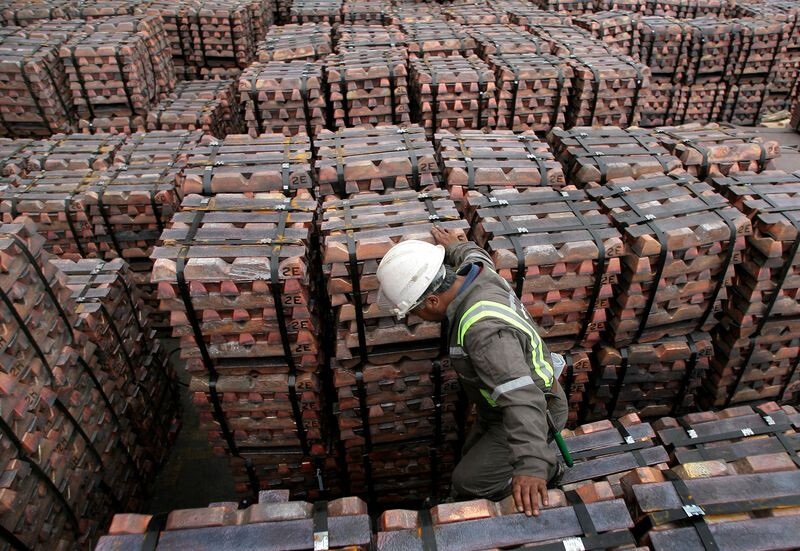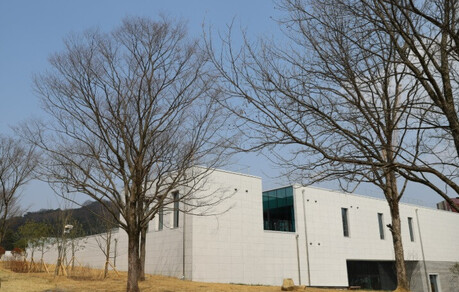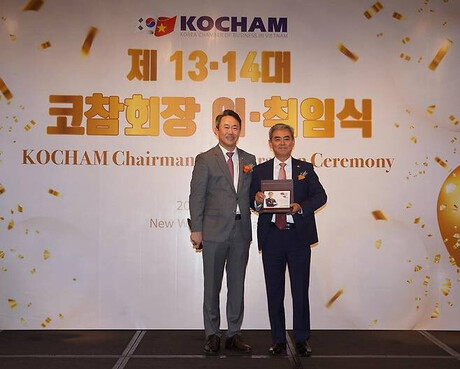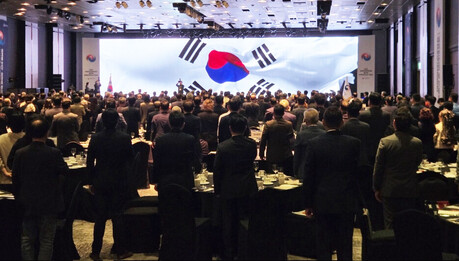
A helicopter powerfully ascends towards the peaks of the Andes Mountains in South America. The experienced pilot flies as close as possible to the mountainside to avoid the strong winds, but unpredictable gusts blowing through the thin air constantly shake the helicopter. After about an hour's flight from a city in the San Juan province, the helicopter carefully lands at an altitude of 3,500 meters.
The landscape before us resembles a lunar research base camp. However, a blue sky stretches overhead, and a fierce wind blows under the intense sunlight. Rows of container boxes stand side by side, next to a wireless communication antenna, a diesel generator, and a small stream. Numerous rock fragments are scattered around.
This is Los Azules, one of the world's largest undeveloped copper deposits.
Safety First at the High-Altitude Camp
Despite the late autumn (late spring in the Northern Hemisphere), about 50 personnel remain here to maintain the camp operations. Most of them are geologists, camp managers, and drivers, busy inspecting the infrastructure ahead of the winter camp closure. During the summer, up to 900 people reside here, working for 14 days followed by 14 days of rest. The journey to San Juan takes a full 8 hours.
Safety is the top priority here. Pickup trucks move slowly at walking speed, and it is mandatory to report departures via radio when leaving the camp. Although full-scale construction work has not yet begun, wearing helmets and safety shoes is essential for any outdoor activities.
This remote area is dozens of kilometers away from the nearest village. The Chilean border is just a two-hour drive by pickup truck. In the summer, Chilean shepherds drive their goat herds over the mountains to the few green pastures formed along the waterways. They make cheese from goat's milk and sell it in the Chilean market.
A wide road has been carved along the rugged mountainside. Standing at the viewpoint, one can vaguely imagine the scale of the massive mine to be developed in the future. A vast open-pit mine, 2.5 km wide and 4 km long, is planned in a valley surrounded by three mountain ranges. Three crushers will sequentially break down the rocks, which will then be transported via conveyor belts to another valley and poured onto a special membrane. The goal is to produce 180,000 tons of copper annually from this high-altitude desert within just a few years, a scale equivalent to one of the world's top 20 copper mines.
Surging Demand, Stagnant Production
The global commodities industry is eagerly awaiting the successful development of large-scale projects like Los Azules. Copper is an essential material for various high-tech industries, including electric vehicles, renewable energy technologies, data centers, and artificial intelligence infrastructure, and its demand is expected to increase rapidly in the future. Global mining group BHP forecasts that global copper demand, which was around 26 million tons in 2024, will increase by 1 million tons annually until 2035.
On the other hand, production in major copper-producing countries such as Chile, Peru, and the United States remains stagnant. This supply-demand imbalance has caused copper prices to more than double over the past decade, currently approaching $11,000 per ton. Hedge fund manager Pierre Andurand even predicts that copper prices could rise to $40,000 per ton in the coming years.
In this situation, the global mining industry is paying close attention to the San Juan region of Argentina. More than six large-scale copper mine development projects, including Los Azules, are being pursued here, but none have yet reached the full production stage. Major international commodities companies such as Glencore, BHP, Rio Tinto, Lundin, and McEwen Copper have already entered the region to explore business opportunities.
If these projects are successfully developed, Argentina could emerge as a major supplier in the global copper market, alongside Peru and Congo, following Chile, the world's largest copper producer. Mining analysis firm Hallgarten & Company recently asked in a report, "Could San Juan be the new Chile?" highly evaluating Argentina's potential.
Challenges to Overcome: Infrastructure, Investment, Economic Uncertainty
For Argentina to emerge as a new global star in the copper industry, it must overcome numerous challenges. Above all, the poor infrastructure environment poses the biggest obstacle to mine development. The San Juan region, where the Los Azules mine is located, is a high-altitude area lacking basic infrastructure such as roads, electricity, and water. Massive costs will be required to build this infrastructure anew for mine development.
Furthermore, Argentina's unstable economic situation and high investment risk make it difficult to attract foreign investment. Chronic inflation, frequent policy changes, and foreign exchange controls place a significant burden on investors, making them hesitant to invest in large-scale mine development projects with substantial initial investment costs. In fact, the Los Azules project has seen years of development discussions without a firm investment decision being made.
New Opportunities: Technological Innovation and Government Support
Nevertheless, there are positive prospects for Argentina's copper industry. Recent innovations in mining technology are making the development of deposits that were previously uneconomical feasible, and new technologies are being introduced in response to the increasing demand for environmentally friendly and sustainable mining methods. For example, artificial intelligence (AI)-based exploration technology is improving the efficiency of ore deposit discovery, and robotic automation systems can enhance the safety and productivity of the mining process. Additionally, wastewater recycling technology and the use of renewable energy can contribute to minimizing the environmental impact of mine development.
The Argentine government also recognizes the potential of the mining sector and is promoting various policies to attract foreign investment. Tax breaks for mining investment, deregulation, and support for infrastructure development can help improve the investment environment and increase the attractiveness of mine development projects. Furthermore, a clear vision and policy direction for sustainable mining development from the government will be crucial in gaining the trust of investors.
Conclusion: Between Potential and Challenges
Argentina has significant potential to emerge as a new powerhouse in the global copper industry based on its abundant copper reserves. In particular, the successful development of large-scale projects such as the Los Azules mine can contribute to resolving the supply-demand imbalance in the global copper market and become a new engine for Argentina's economic growth.
However, the poor infrastructure environment, unstable economic situation, and high initial investment costs are significant challenges that Argentina must overcome. To overcome these difficulties and turn its potential into reality, active government support and efforts to attract investment are essential. With a commitment to technological innovation and sustainable development, it remains to be seen whether Argentina can truly rise as a new global star in the copper industry.
[Copyright (c) Global Economic Times. All Rights Reserved.]






























